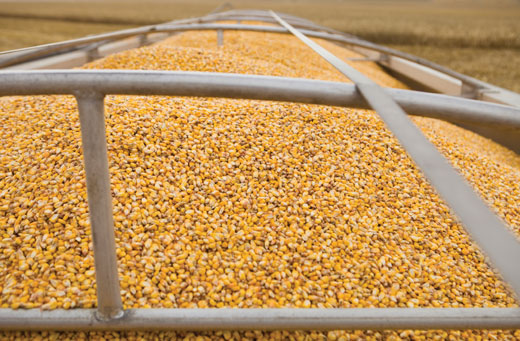Grain Marketing Strategies for Landowners
 While it’s no secret that the main component of farm profitability involves producing a good crop with the greatest efficiency and lowest cost of production, it’s also true that marketing that crop plays a significant role in profitability as well. While farmers and landowners may differ in their individual marketing style, it’s important that they identify and employ a grain marketing strategy that works for them.
While it’s no secret that the main component of farm profitability involves producing a good crop with the greatest efficiency and lowest cost of production, it’s also true that marketing that crop plays a significant role in profitability as well. While farmers and landowners may differ in their individual marketing style, it’s important that they identify and employ a grain marketing strategy that works for them.
A study by the Kansas State University Extension Cooperative identified four main grain marketing strategies that are typically used by producers: routine strategies, systematic strategies, strategies based on individually generated forecasts, and strategies based on market-generated forecasts of production profits.
With routine strategies, there are little to no surprises; the producer makes grain marketing decisions at the same time of year using the same marketing tools regardless of market conditions. In this way, once the marketing decisions have been made, little to no further input is needed, and marketing decisions become rather automatic.
Systematic strategies base decision making on key market indicators and allow for year to year variations in marketing actions. A producer employing a systematic marketing strategy pays attention to the key market indicators and what they’re doing based on the market conditions for that time period, and makes decisions accordingly.
Some producers are able to market their crops year to year based upon their own individually generated marketing forecasts, owing to superior access to market information or background experience in the marketing field. These producers are able to consistently profit by basing their marketing decisions upon their own market forecasts.
The last grain marketing strategy involves basing marketing decisions upon market-generated forecasts of production profits. This is done by using futures and options prices as a basis for production and marketing decisions. Examples include storing grain for postharvest sale when the harvest basis levels are wider than normal, or by hedging grain futures when preharvest grain forecasts are signaling higher than normal profits, and avoiding hedges when they are signaling lower than normal profits. This strategy, according to the KSU study author, “is based on anticipating the crop acreage responses of the collective group of grain producers to either high or low expected profits from a crop enterprise, and the subsequent change in production and subsequent prices that will occur the following harvest. Higher than normal preharvest hedging profits will give an incentive to crop producers to increase crop acreage and associated production, leading to lower prices by the following harvest.”
Determining which of the above grain marketing strategies is right for your operation depends on a number of factors, such as your individual marketing style and temperament—including your attitude toward price risk, the existing financial state of your farming operation, your grain storage availability, and your familiarity with markets and marketing tools.
Identifying your main marketing goals with the factors listed above in mind will help you to determine which grain marketing strategy is the right fit. Whether it’s price enhancement or price risk reduction, having a good marketing strategy in place can help your bottom line and your peace of mind.
If you have questions or concerns about the marketing strategies available to you, feel free to consult a UFARM manager to help point you in the right direction.
Sources consulted: O’Brien, Daniel. “Grain Marketing Plans for Farmers.” Kansas State University. Kansas State University Agricultural Experiment Station and Cooperative Extension Service. Jul. 2000. Web. 26 Jan. 2015.

